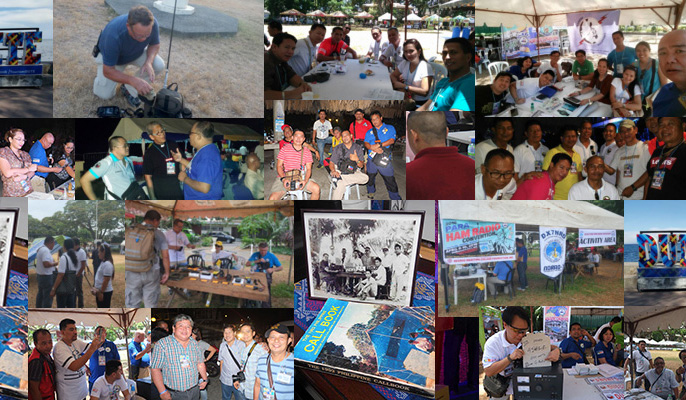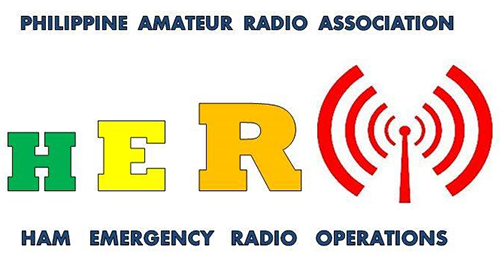

All systems normal.
Commenced 3 days before expected landfall of a storm/typhoon.
Stations are advised to double check and ensure all their equipment is operational. Check power sources, ex. generator, battery, solar, etc.
Stations in the projected path of the storm/typhoon are advised to take precautionary measures.
Commenced when a storm/typhoon with Public Storm Warning Signal (PSWS) No. 2 or higher has entered the Philippine Area of Responsibility (PAR).
Stations are requested to monitor emergency frequencies and be ready to relay messages.
HERO activates DX1PAR/NTC Central on a 24/7 basis.
Commenced 24 hours before storm/typhoon (PSWS no. 2 or higher) is expected to affect any land mass in the Philippine archipelago; when an earthquake of significant magnitude is reported in the Philippines; or when a disaster/calamity is affecting or has affected the Philippines and emergency communications are necessary.
HERO sends and receives emergency communications on a 24/7 basis at DX1PAR/NTC Central. Local stations in affected areas send and receive emergency communications and updates on a 24/7 basis or as long as their resources permit. Other HERO stations also relay, send and receive emergency communications.
Printable HERO color coding file
Download the Final HERO Report on Typhoon Ruby
JIM/ANCHOR: We begin this week with scenes of devastation in the Philippines: A super typhoon, locally known as Odette, made landfall on December 16th, taking an unusual path that led it to Siargo Island, a major tourist destination. A wide swath of the archipelago fell victim to heavy rain and gusts of more than 200 km per hour. According to a draft report from the Philippine Amateur Radio Association, more than 300 lives were lost with [quote] "devastation beyond description." [endquote] The report said that in the days before landfall, National Traffic System Chairman Romy DU1SMQ ensured that daily roll calls were taken of all amateur districts to measure stations' readiness. The Office of Civil Defense Region 7 and other agencies monitored the HERO emergency network frequency on 40 metres as well. Members of PARA affiliated clubs handled emergency traffic along with health and welfare messages even as their own home QTHs were battered by the typhoon.
Amateur Slow Scan TV was credited with sending invaluable imagery on HF, relaying information that could not be verified via audio. Meanwhile, PARA's director Thelma DU1IVT, said that even after members of PARA's Ham Emergency Radio Operation stood down traffic on the HERO network at 7.095 MHz was ongoing. Rebuilding is expected to take months.
Source: https://www.arnewsline.org/?fbclid=IwAR1s8WC8zHSVakTsU_cFAppkUhamVtAVzP5YBQr0sD1aRPYdcHn31GnpK7I
The Simulated Emergency Test to measure the disaster readiness of Amateur Radio involved 38 countries and four others who recognised its importance but could not take part this time.
IARU Region 1 Emergency Communications Co-Ordinator Greg Mossop G0DUB, has reported on the event, which was different from other GlobalSETs held since 2006.
While earlier events had an emphasis on message handling and field stations, a better and simpler exercise was needed to demonstrate the strength of Amateur Radio Emergency Communications throughout the world.
Greg Mossop G0DUB said: “The IARU Emergency Communications Co-ordinators decided that the best way to achieve this would be to have an availability or 'call-out' exercise.
“It asked all countries with Emergency Communications Groups to contact their members and ask them how quickly they could get on air if required.”
There's a plotting chart from Typhoon 2000 web site for those who wish to monitor weather systems approaching the Philippines. The chart can be viewed/downloaded by clicking the link below.
http://www.typhoon2000.ph/TCGuide.htm
It can be printed out on paper or a large tarpaulin if desired. Let’s hope we don’t need to use it very often this coming year.